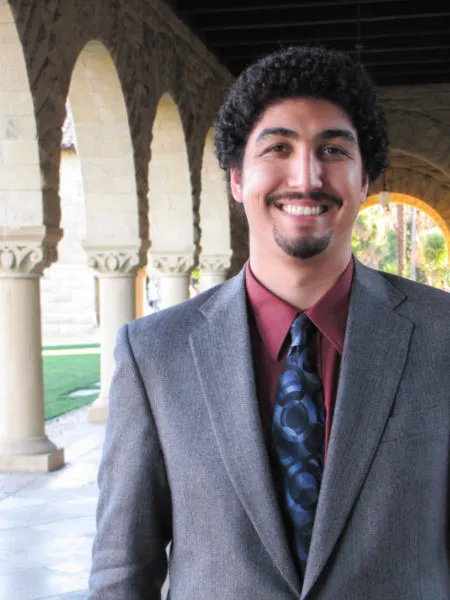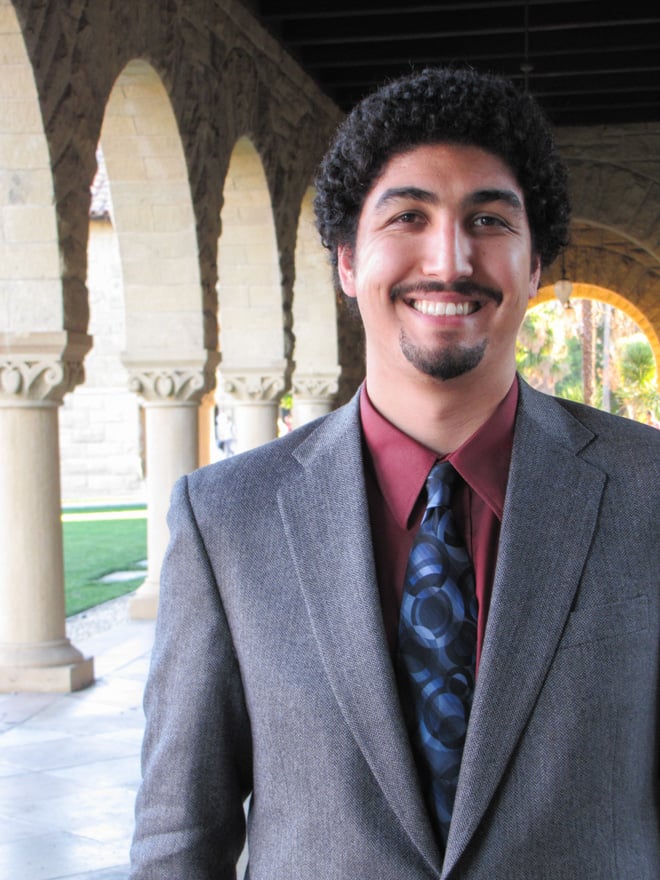In this edition of Glam Grads, The Daily talked with fourth-year Ph.D. candidate in sociology Aaron Heshel Silverman about his storied path to sociology and the way social science research has changed. After earning an undergraduate degree in philosophy at University of North Carolina at Chapel Hill, Silverman briefly considered law and then worked as a high school English teacher before earning his master’s in sociology at University of North Carolina at Charlotte. At Stanford, Silverman studies the collective action, hierarchies and morals of groups.

The Stanford Daily (TSD): What was your experience teaching high school like?
Aaron Heshel Silverman (AHS): It was challenging. Primarily because I went into it maybe more idealistically … for different reasons than many people go into teaching. I was very interested in literature and exploring the different ways of interpreting texts – fiction – and that was very fun and interesting, but unfortunately most of the energy of high school teachers goes towards managing student behavior.
TSD: How did your experience teaching affect how you think about education?
AHS: The emphasis on various aspects of teacher training could be re-prioritized more towards developing skills of behavior management. There’s plenty of classwork done on understanding lesson development and understanding what’s going on in adolescents’ minds … In my experience, there isn’t much training on how to actually put that into practice and develop the practical skills involved in maximizing your effectiveness in the thing that everyone thinks education is about, which is conveying ideas and getting kids to develop.
TSD: Tell me about your research.
AHS: Most of my research is within the social psychology sub-discipline of sociology, and within that, it’s within the group processes tradition of social psychology, which is studying how people interact in groups and what features emerge as a result of people’s interactions, as well as how features of groups have effects on the ways people subsequently interact. In particular, what I’m researching now has to do with the effects of social hierarchy in groups and attitudes of similar among group members.
TSD: What’s an example of the effects of social hierarchy?
AHS: Most groups that form end up creating some sort of social hierarchy. It’s a tendency people have. We quickly assess the situation in a group and try to figure out who’s saying the most valuable information, who’s the most interesting person. As a result of disproportionately attending to one person over the rest of the group, and each person in the group having fairly similar attitudes about who the most interesting or valuable person in the group is, a hierarchy is formed. Most groups have that; it tends to be fairly subtle and informal. The most stark example of hierarchy would be large organizations such as IBM, Microsoft, where the hierarchy is actually encoded in the organization’s structure itself. However … even friendship groups form social ranks. Some people in the group are more influential over what the groups does than others. Why are we always going bowling? Because Alice, who’s the most interesting person here, keeps wanting us to go bowling.
TSD: How do you empirically or qualitatively go about studying that?
AHS: There are a number of ways; the most common way has been conducting experiments either in the laboratory or with online surveys to either simulate or replicate group activity and then force some sort of choice that requires reading what other people in the group think. Picking up on what they think is the right choice, and then deciding whether to agree with them.
TSD: What interests you most about this?
AHS: At first, it was the path of least resistance. When I entered the master’s program at UNC-Charlotte, the most influential, outspoken and (in my case) avuncular professor in that department was an alumnus of Stanford, undergrad and graduate student, and he took me under his wing and said, “Here’s how you do social science.” I did what he told me to do and in the process learned a lot about what his idea of social science was, which actually aligns quite well with that the department at Stanford advocated as social science from about the ’60s to the ’80s. Since then, it’s opened up, democratized, liberalized; there are competing ideas of how you do social science with more equal influence.
TSD: What were the dominant ideas at those two different times?
AHS: From the ’60s to the ’80s, scientific positivism was highly influential. The most influential professors in the department saw themselves as engaging in projects that were analogous to the natural and physical sciences. There are laws out there, and you discover them by pursuing the most precise and rigorous investigations possible, including and primarily experiments. Since then, other schools of thought have exerted themselves on the Stanford sociology department, and there is now a diversity of understanding as to how social science can be done. Even if, individually, each professor might have ideas of what the best way to do social science is, they also acknowledge that everyone else’s understanding of social science is legitimate and worth paying attention to.
TSD: What’s your dissertation on, specifically?
AHS: It’s on how moral consensus within a group can moderate the divisive effects of hierarchy within a group. So, as I said before, groups tend to form hierarchies, but they’re not always functional. Sometimes the hierarchy creates divisiveness through the group – like, “I know Alice is the most interesting person in this group, but I really wish sometimes people would listen to me.” That can cause jealousy and pull groups apart. I’m investigating whether by making moral attitudes of similarity salient to the group, this divisiveness of hierarchy can be attenuated, so people in the group are more respecting of it. They’re like, “Alice is the most influential person in the group, and sometimes I wish people would do what I say, but because we’re all vegans here – or we’re all slightly-left-of-center-here, or something – and we all take pride in that, and Alice is an excellent example of being a vegan or a slightly-left-of-center person, then it’s okay, we should probably just do what she says.”
TSD: So it’s almost attaching more value to someone’s role based off the morals that everyone shares?
AHS: Yeah, or overlooking whatever negative aspects you might have previously associated with that person.
TSD: What if Alice becomes a really bad vegan?
AHS: Right, so there are a couple ways the group could go. That’s an interesting dissertation-level investigation itself: When group leaders diverge from the moral consensus, does the group go with the leader, or with what they previously thought the moral consensus was? Will they demote the leader, or perhaps ostracize the leader, or will they say, “Well, actually, veganism wasn’t that important after all, and Alice is pretty cool, so we’ll stick with her?” … One interesting line of thought in this kind of dissertation research is [whether] we can predict the success of authoritarian leaders, charismatic leaders, cult leaders based on their relative success at making salient or unifying the group members around some shared value system. You can feel free to make whatever comparisons you want about the current political climate.
This transcript has been condensed and lightly edited.
Contact Fiona Kelliher at [email protected].
